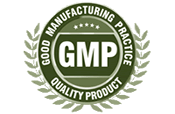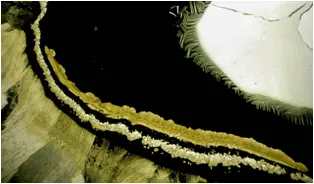Thermal Analysis
Differences in heat flow arise when a sample absorbs or releases heat due to thermal effects such as melting, crystallization, chemical reactions, polymorphic transitions, vaporization and many other processes. Specific heat capacities and changes in heat capacity, for example during a glass transition, can also be determined from the difference in heat flow.Thermal measurements are used to determine the composition of materials and to predict their thermal stability at temperatures up to 1200°C. Analysis techniques can characterize materials that exhibit weight loss or gain due to decomposition, oxidation, or dehydration.
We offer both cGMP and non GMP testing services. Please see below for more detail about the services we offer.
Thermo Gravimetric Analysis
(TGA and TG-IR) -
Determine thermal characteristics and chemical identity
| Application AND Technique Description | ||
|---|---|---|
TGA is used to determine characteristics of materials such as degradation temperatures, absorbed
moisture content, the level of inorganic and organic components in materials, decomposition points,
and solvent residues. TGA can be used to evaluate the thermal stability of a material. Using TG-IR,
the TGA instrument continuously weighs a sample as it is heated. As the temperature increases, various
components of the sample are decomposed and the gasses can be measured and identified using infrared
spectroscopy (TG-IR). The technique is useful for Organics, Thermostable Polymers, and Ceramic
materials.
|
||
| Instruments Used | Model | Notes: |
| TA Instruments |
Q50
Discover 5500 DTGS detector TGA/IR interface accessory Evolved gas furnace (gas cell heats to 250 °C and the transfer line goes to 225 °C.) Nitrogen or helium purge. Thermal Advantage Release 5.5.3 5500 Discovery with Trios v.4.3.1.39215 software. |
Wiki Reference for TGA

cGMP Analysis Available |
Differential Scanning Calorimetry (DSC)
Detection of phase transitions
| Application AND Technique Description | ||
|---|---|---|
|
By observing the difference in heat flow between the sample and reference, differential scanning
calorimeters are able to measure the amount of heat absorbed or released during phase transitions. The
ability to determine transition temperatures and associated enthalpies makes DSC the go-to technique
for study of first-order transitions, i.e. those involving latent heat such as melting,
crystallization, and water loss from a hydrated crystal. DSC can also be used to measure
characteristic physical properties of materials; absolute heat capacity for example.
In addition, subtle physical changes associated with second-order transitions can be detected by DSC. An example is the glass transition event, which occurs because of the decrease in viscosity (increase in molecular mobility) that follows heating of an amorphous solid. Although viscosity increases in a continuous fashion with heating, a discontinuous glass transition is detectable by DSC when molecular motion in the test sample occurs on the same time scale as the DSC measurement. DSC is commonly used to determine the glass transition temperature and crystalline melting point of polymeric materials. This technique can also be used to determine the percent crystallinity of a polymer, oxidative induction time (OIT) of a material, heat of reaction, and normal boiling point. DSC has found use in many fields, including the study of chemical reactions, determination of the tertiary structures and binding efficiencies of proteins, and quantitation of the percent crystallinity, examine curing, and define degradation events of polymers. Methods have been developed in which DSC alone can be used to determine solubilities and active pharmaceutical ingredient (API)/excipient compatibilities. Triclinic uses DSC data not only for standard characterization of solid substances, but also as part of a proprietary method of predicting physical stabilities of amorphous APIs or formulations. Our new Discovery 2500 System provides accurate, precise measurement of thermal transitions. The available modulated DSC configuration allows the separation of otherwise overlapping events. |
||
| Instruments Used | Model | Notes: |
| TA Instruments |
TA Instruments - Q 2000, and Q2500 Discovery Systems Thermal Advantage Software (5.5.3) |
Wiki Reference for Differential Scanning Calorimetry

cGMP Analysis Available |
Micro Calorimetry -
Thermal data from small amounts of material
| Application AND Technique Description | ||
|---|---|---|
|
Allows thermal data to be obtained on small amounts of material. The technique involves heating the
sample at a controlled rate and recording the heat flow either into or from the specimen.
Microcalorimetry is a versatile technique for studying thermal activities in terms of heat, heat flow,
and heat capacity. Microcalorimetry can be completely nondestructive and non-invasive to the sample.
It seldom requires any prior sample treatment nor does it limit analysis to a physical state of the
sample. Solids, liquids and gases can all be investigated.
Microcalorimetry does not require a sample that has a particular characteristic to enable measurement like FTIR, UV-VIS, NMR, etc. Microcalorimetry is a direct and continuous measurement of the process under study. Unlike other analytical techniques that give "snapshots" of data, microcalorimetry gives real-time data continuously as the process proceeds. |
||
| Instrument Used | Model | Notes: |
| MicroCal/GE | ITC 200 | Wiki Reference for Micro Calorimetry |
Hot Stage Optical Microscopy -
Reveal Thermal Behavior
| Application AND Technique Description | ||
|---|---|---|
A technique for studying the phases of solid drug substances and cocrystal development using a
programmable melting apparatus. Also known as fusion methods; thermo-microscopy. Useful for
identifying fusable solids. 
Kofler Hotstage image showing the melt of two compounds and the subsequent formation of a cocrystal at the eutectic (yellow band in the middle of image) |
||
| Instrument Used | Model | Notes: |
| Linkam |
LTS420
Ambient - 600 °C |
Wiki Reference for Hot Stage Microscopy |